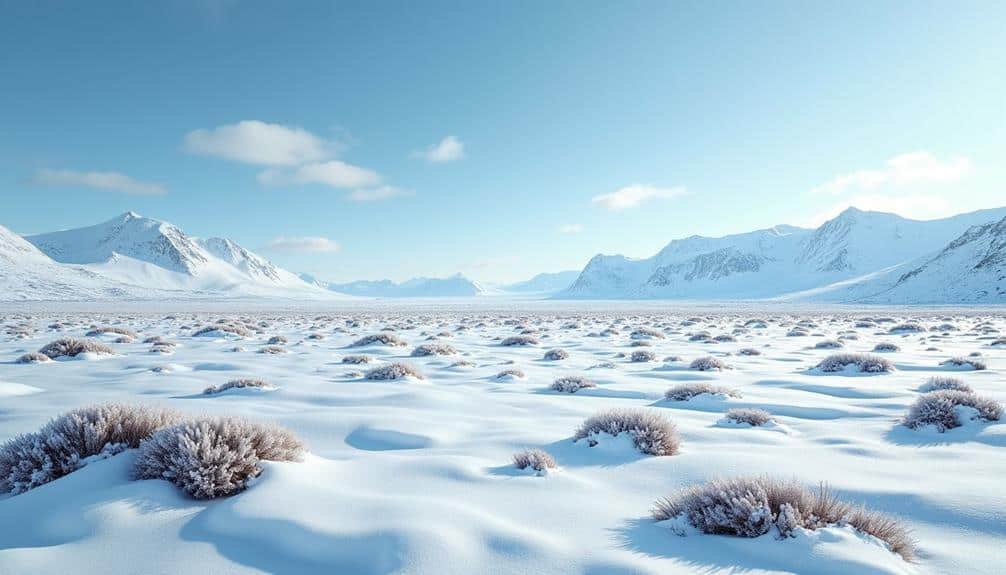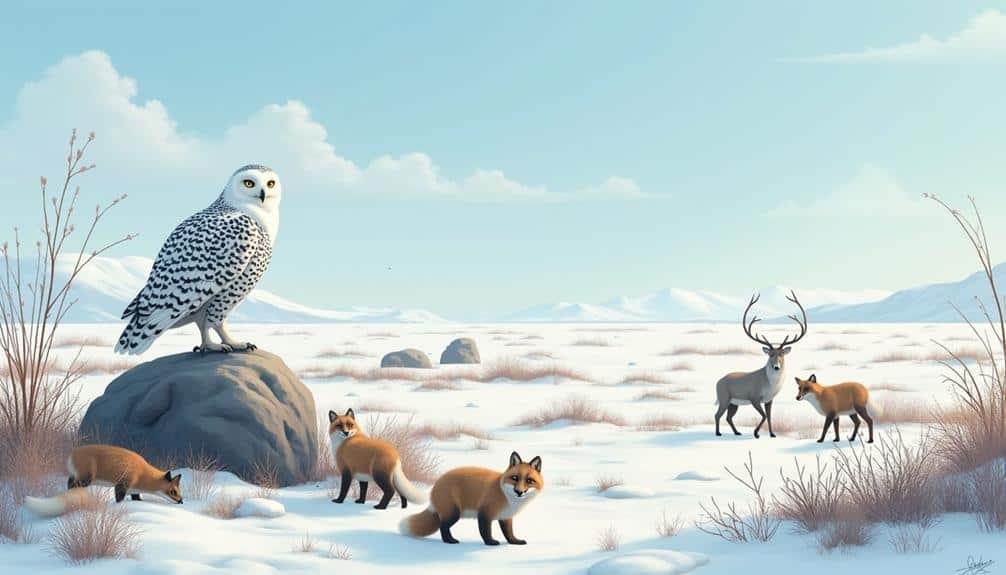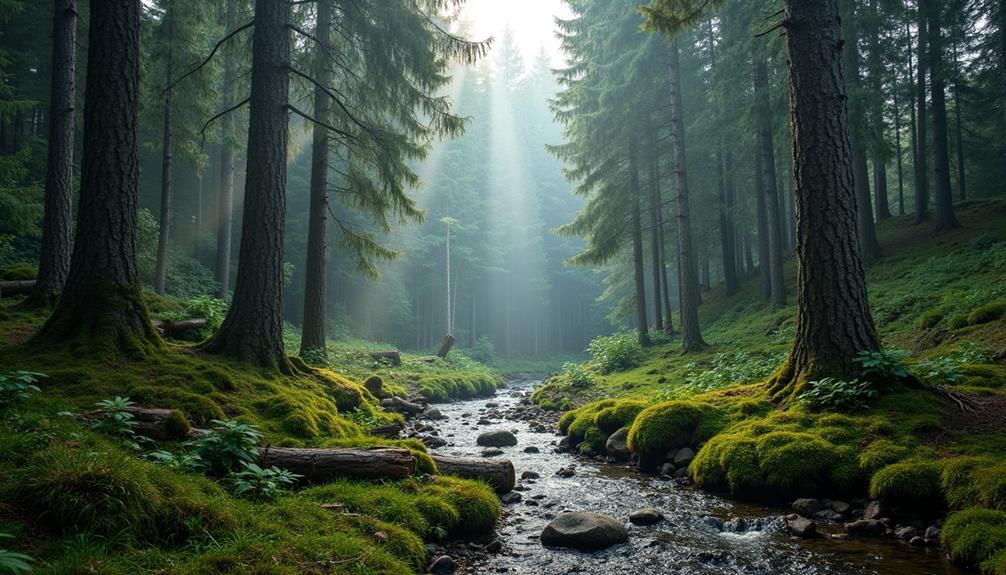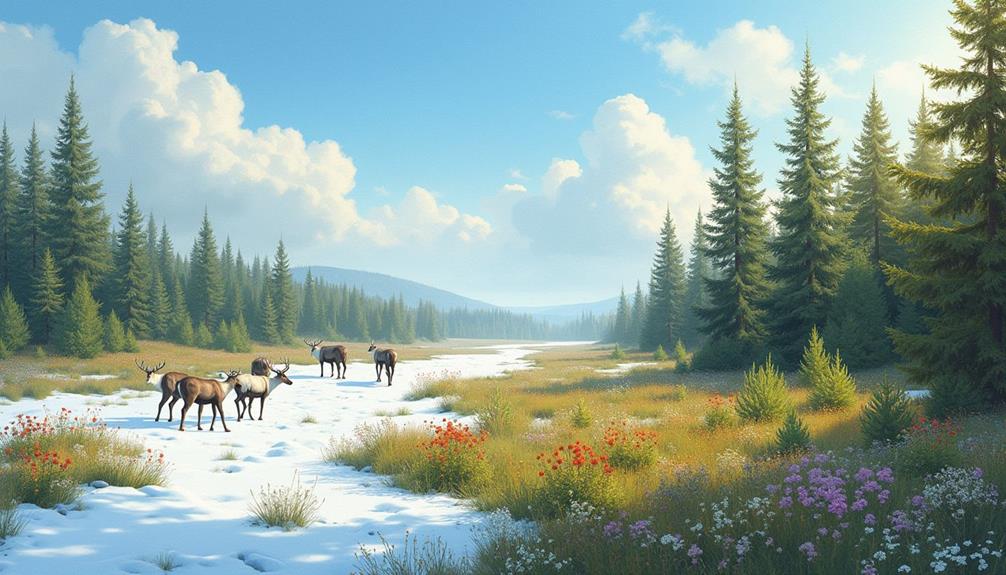Russia’s change from the stark, frozen expanse of the tundra to the dense, vibrant forests of the taiga presents a fascinating study in ecological diversity and adaptation. This transformation, influenced by varying climates, supports a dynamic range of flora and fauna uniquely suited to each environment. The journey begins with the tundra’s hardy perennials and minimalistic landscape, gradually giving way to the lush, coniferous vegetation of the taiga. Understanding this progression not only highlights the resilience of life in harsh conditions but also underscores the intricate balance maintained within these ecosystems.
The Tundra Landscape

Nestled in the northernmost reaches of Russia lies the tundra landscape, a unique ecosystem characterized by its permafrost-covered ground and sparse vegetation. This region experiences a tundra climate, typified by long, harsh winters and short, cool summers. Temperatures can plummet to extreme lows, often remaining below freezing for most of the year, with only a brief thawing period in the summertime.
The tundra soil is distinct due to its permafrost layer, a permanently frozen subsoil that lies just beneath the surface. This permafrost acts as a barrier to deep root penetration, considerably influencing the types of vegetation that can survive in this environment.
The soil above the permafrost, known as the active layer, thaws during the short summer months, allowing a limited period for biological activity and plant growth.
Despite the challenging conditions, the tundra supports a range of life adapted to its unique climate and soil. The nutrient-poor, acidic soil conditions are a result of slow decomposition rates, which are hampered by the cold temperatures.
This creates a delicate balance within the ecosystem, where any disturbance can have considerable impacts on the fragile environment.
Flora of the Tundra
Despite the harsh and unforgiving conditions of the tundra, a remarkable variety of flora has adapted to thrive in this extreme environment. Tundra vegetation, characterized by its resilience, includes perennial plants, mosses, lichens, and low-growing shrubs. These species have developed unique tundra adaptations that enable them to survive the severe cold, strong winds, and nutrient-poor soils.
One of the most notable adaptations is the low stature of tundra plants, which helps them resist damage from freezing temperatures and desiccating winds. Many plants also have a cushion-like growth form that reduces heat loss and provides some protection against the elements.
In addition, the short growing season, often lasting only a few weeks, necessitates rapid development and reproduction. For instance, Arctic willows and dwarf birches have evolved to produce flowers and seeds quickly during brief periods of favorable weather.
Another key adaptation is the ability of tundra plants to carry out photosynthesis at low temperatures and low light conditions. Thick, waxy leaves help retain moisture and minimize water loss.
Moreover, many tundra species form symbiotic relationships with fungi, which enhance nutrient absorption in the poor-quality soils.
Through these adaptations, tundra vegetation exemplifies nature’s ingenuity in overcoming extreme environmental challenges.
Fauna of the Tundra

The tundra’s severe climate and inhospitable conditions foster a fauna that is remarkably adapted to survive and even flourish in one of the planet’s most challenging environments.
The biodiversity in the tundra, though limited compared to other biomes, showcases extraordinary examples of tundra adaptations that enable species to thrive in extreme cold, strong winds, and short growing seasons.
Prominent among these adaptations are the physiological and behavioral traits of animals like the Arctic fox and the caribou. The Arctic fox, for instance, has a dense, multi-layered fur that provides insulation, and its compact body shape minimizes heat loss.
Caribou, also known as reindeer, have specialized hooves that adapt to seasonal changes, providing traction on snow and ice during winter and becoming spongier in summer to traverse soft, wet terrain.
Birds such as the snowy owl and the ptarmigan also exemplify tundra biodiversity, with white plumage that provides camouflage against predators and helps conserve body heat.
Additionally, many tundra species adopt migratory behaviors, moving to more hospitable areas during the harshest winter months.
These adaptations collectively underscore the resilience and ingenuity of tundra fauna in maneuvering their formidable habitat.
Transition to the Taiga
As one moves southward from the stark, frozen expanses of the tundra, the landscape gradually merges into the dense, coniferous forests of the taiga. This shift zone is a fascinating area where the harsh conditions of the tundra give way to a slightly milder climate, fostering a rich interplay of flora and fauna.
The climate impact in this region is significant, as the warming temperatures enable the growth of hardy shrubs and small trees, which in turn support a wider array of animal species.
This gradual change is essential for maintaining ecological balance. In the tundra, the soil remains permafrost, limiting vegetation to low-lying plants. However, as temperatures rise moving south, the soil thaws more deeply, permitting coniferous trees like spruces and pines to take root.
This change in vegetation structure provides crucial habitats and resources for species adapted to this environment, such as the Siberian jay and the Eurasian lynx.
The shift zone is not merely a buffer but an active and dynamic region that plays an important role in the larger ecosystem. It underscores the intricate interdependence between climate and biodiversity, illustrating how slight changes in environmental conditions can lead to significant shifts in ecological patterns.
Taiga Vegetation

Moving deeper into the taiga, the landscape is dominated by vast stretches of coniferous forests, which are characterized by their towering spruces, pines, and firs.
These trees form the backbone of the taiga vegetation, creating a dense canopy that allows limited sunlight to reach the forest floor. This unique structure profoundly influences the taiga biodiversity, supporting a specialized array of plant life adapted to the harsh conditions.
One of the key features of taiga adaptation is the needle-like leaves of conifers, which reduce water loss and withstand heavy snow loads. The evergreen nature of these trees allows them to photosynthesize whenever conditions are favorable, even during short bursts of warmer winter days.
The forest floor, though receiving minimal light, hosts a variety of shade-tolerant plants, including mosses, lichens, and shrubs such as the dwarf birch and blueberry.
The taiga’s soils, often acidic and nutrient-poor, further shape the vegetation. Slow decomposition rates mean that organic material accumulates, creating a thick layer of humus.
This unique combination of factors results in an ecosystem where taiga biodiversity thrives through remarkable adaptations, providing a foundation for the complex interplay of life in this expansive forest biome.
Wildlife in the Taiga
Amidst the towering conifers and shaded forest floors, the taiga hosts a diverse range of wildlife uniquely adapted to its challenging environment. This biome, characterized by its cold climate and extensive forest cover, is home to a variety of species that contribute to its rich taiga biodiversity.
Large mammals such as moose, reindeer, and wolves roam these vast landscapes, each playing a vital role in the ecosystem. The presence of apex predators like the Siberian tiger and brown bear exemplifies the complex predator dynamics within the taiga, helping to maintain a balanced food web.
Smaller mammals, including the red fox, lynx, and sable, thrive in the underbrush, while avian species such as the great gray owl and the Siberian jay add to the auditory tapestry of the forest. The taiga’s waterways and wetlands support beavers and otters, further enhancing the region’s ecological complexity.
Amphibians and reptiles, though less abundant due to the harsh climate, also find niches within this environment.
Insects, particularly various species of beetles and mosquitoes, play essential roles in nutrient cycling and as food sources for higher trophic levels. Together, these species illustrate the remarkable adaptability and resilience inherent in taiga biodiversity.
Seasonal Changes

While the taiga’s diverse wildlife showcases the richness of its ecosystem, the region’s seasonal changes play an equally significant role in shaping its natural environment. The taiga, characterized by its coniferous forests, experiences marked seasonal fluctuations that profoundly influence the climate impact on its flora and fauna.
Winter in the taiga is severe, with temperatures plunging well below freezing, leading to a thick blanket of snow that persists for several months. This harsh season imposes a period of dormancy on many plant species, while animals exhibit seasonal behavior such as hibernation or migration to conserve energy and survive the frigid conditions.
Come spring, the thawing snow and rising temperatures initiate a rapid transformation. Plants burst into growth, taking advantage of the brief but intense summer period. This season sees an explosion of life, with migratory birds returning and mammals becoming more active. The extended daylight hours of the summer solstice further amplify this productivity.
Autumn, marked by decreasing temperatures and shorter days, triggers a preparatory phase for the impending winter. Trees shed their needles, and animals accumulate fat reserves or migrate once more.
These cyclical changes underscore the resilience and adaptability of the taiga’s ecosystem to its climatic variability.
Conservation Efforts
Conservation efforts in Russia’s taiga are vital to preserving this unique and biodiverse ecosystem. Sustainable practices are foundational to maintaining the ecological balance, guaranteeing that logging and other resource extraction activities do not irreparably damage the habitat.
Habitat restoration initiatives focus on reforesting degraded areas and protecting biodiversity hotspots, which serve as sanctuaries for numerous plant and animal species.
Legislative measures play an important role in safeguarding the taiga. Enforcing stringent environmental laws helps mitigate the impact of industrial activities and promotes climate resilience.
Community engagement is another significant component, as local populations are often the stewards of these lands. By involving them in conservation education and participatory decision-making processes, long-term ecological health can be achieved.
Ecological research provides invaluable insights into the complexities of the taiga ecosystem. Scientists study the interactions between species and their environment, offering data that informs effective conservation strategies.
Understanding these dynamics is pivotal for developing adaptive management plans that can respond to changing climatic conditions. Together, these multifaceted approaches guarantee that Russia’s taiga remains a vibrant and thriving ecosystem for future generations.




